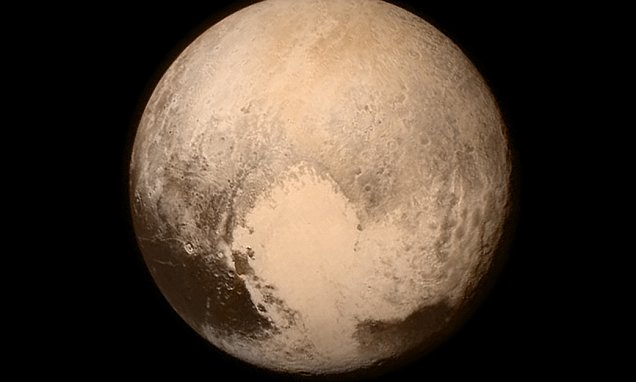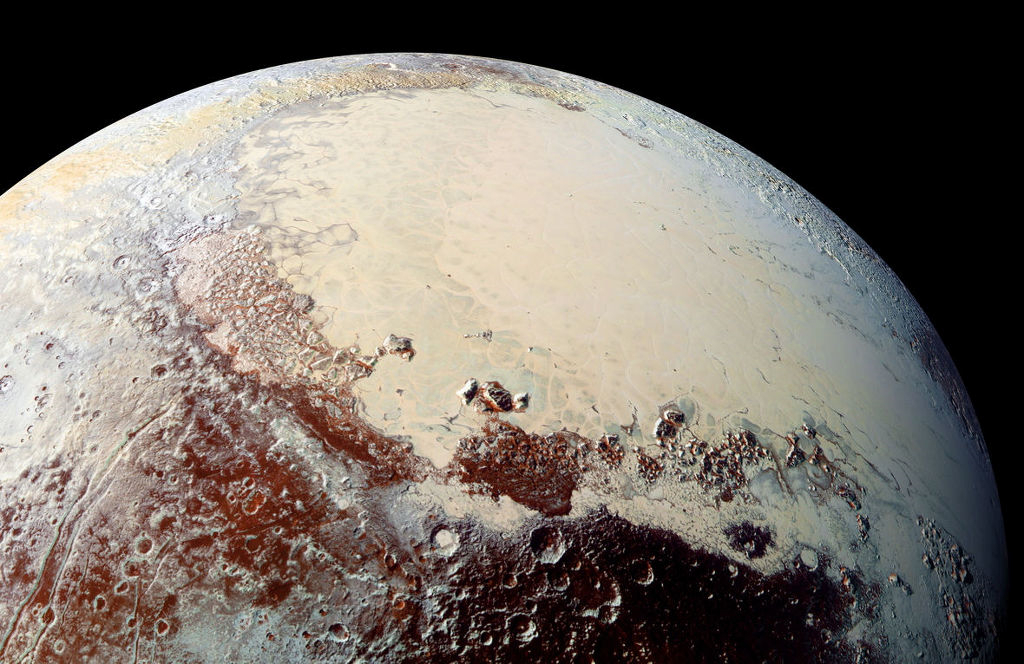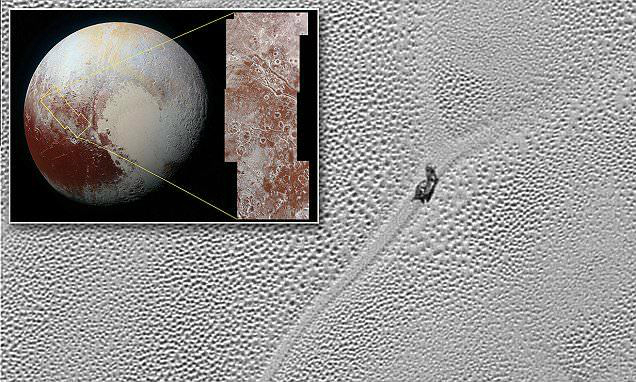
소금기로 이루어진 거대한 명왕성의 죽음의 바다
The study was led by Brown University geologist Professor Brandon Johnson and published in Geophysical Research Letters. The research focused on Sputnik Planum, a 2.5-mile (4 km) deep, 621 mile (1,000 km) wide basin that makes up the western lobe - the dwarf planet's famous heart-shaped feature (pictured).

나사가 공개한 뉴 호라이즌호가 찍은 명왕성의 아름다운 모습
This snapshot captured by NASA's New Horizons spacecraft shows the western region of the heart-shaped area informally known as Sputnik Planum, which has been found to be rich in nitrogen, carbon monoxide and methane ices. The image combines blue, red and infrared images taken by the Ralph/Multispectral Visual Imaging Camera (MVIC).

나사가 공개한 뉴 호라이즌호가 명왕성을 찍은 사진으로 명왕성 중심부에 마치 달팽이가 얼음위로 지나가는 것과 같은 이상한 장면
Nasa experts believe the object may be a 'dirty block of water ice' which is floating in denser solid nitrogen. Also visible are thousands of pits in the surface, which scientists believe may form by sublimation. Transmitted to Earth on Dec. 24, this image from the Long Range Reconnaissance Imager (LORRI) extends New Horizons' highest-resolution views of Pluto to the very center of Sputnik Planum, the informally named icy plain that forms the left side of Pluto's 'heart' feature (inset).